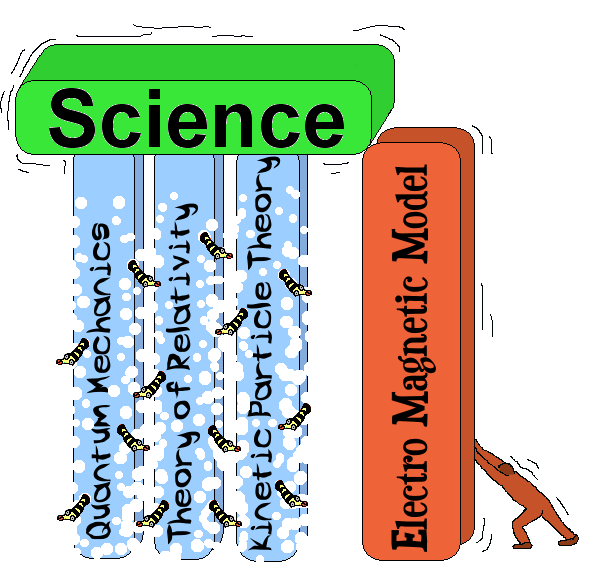
Modern science is facing major problems today. Three fundamental theories in science which where "accepted" about 100 years ago (quantum mechanics, two theories of relativity and the Kinetic particle theory) have lead to different controversial conclusions and unsolved questions. An increasing number of scientists do now question different aspects of these old theories. The scientists that considered these old theories to be everlasting truths have until now managed to keep critics of these theories away from ordinary scientific publications. But no man-made theory should be considered as an absolute truth, and in a time when also scientific authorities seems to loose influence, it is our hope that the good old scientific principle once more will dominate in science. A main problem the last years has been that many in scientific communities seem to focus more on what person that says things than what is said. This sort of blind faith in authorities is not a good foundation for building the science of the future.
It is therefore a general
hope that it should be possible to discuss fundamental scientific
questions without risking serious sanctions from scientific
authorities. An important principle in science is to check all
theories against new knowledge and discoveries, and there are no
scientific reasons for not including those old theories that are
mentioned here. The main goal for this web site is to present an
electro magnetic model (em-model) which has been
systematically neglected in scientific communities in many years. To
do this, we will here use two different approaches.
1) To obtain
acceptance for a claim that there is a need for a better scientific
foundation, it is necessary to point out where the old theories
fail.
2) This sort of critics have little value if we cannot
bring forth a better alternative. A main point here is therefore to
show that the em-model can explain both the observations that the old
theories tried to explain in addition to many newer observations that
the old theories fail to explain.

In general we can say that a building will be as firm as the foundation allow, and a general assertion here is that the quantum mechanics, the two theories of relativity and the kinetic particle theory may be compared with a foundation which is so full of holes and may fall together at any time. See the illustration. A main aim is therefore to support science by replacing the old foundation with a new one before it falls.
4.11.04 Erling Skaar
|
Problems with Quantum Mechanics! |
Problems with the theories of relativity |
Problems with Kinetic theory of Heat |
|
Modern textbooks say:
|
As long as the textbooks do not present any better evidences for Einstein's equation than the Cockcroft and Walton experiment, it seems that it is those people that are open for the possibility that E=mc² may be incorrect, that is the real scientists although most people seems to be indoctrinated to believe the opposite.
|
Modern textbooks say:
According to this model, Brownian motion is then due to high velocity electron and not high velocity molecules. |
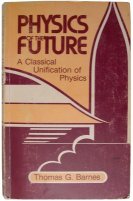
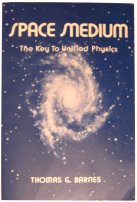 Our classical alternative
to modern physics is called the EM-model (ElectroMagnetic model) which
is a new development which is based on the electromagnetic part of classical
physics. A founder of the modern version was Thomas G Barnes, Texas, USA and
the two books: "Physics of the Future, A classical Unification of Physics" (1983)
and "Space Medium, The Key to Unified Physics" (1986) was a
main inspiration for my work with this model.
Our classical alternative
to modern physics is called the EM-model (ElectroMagnetic model) which
is a new development which is based on the electromagnetic part of classical
physics. A founder of the modern version was Thomas G Barnes, Texas, USA and
the two books: "Physics of the Future, A classical Unification of Physics" (1983)
and "Space Medium, The Key to Unified Physics" (1986) was a
main inspiration for my work with this model.
Note that the main difference between modern physics (Quantum Mechanics, the two theories of Relativity and the Kinetic Particle theory) which we find in textbooks and the EM-model is that the common models are mechanical models of nature where mass, gravitation and inertia are fundamental concepts, while the EM-model is an electromagnetic model where charges, electric force and magnetic force are fundamental concept.
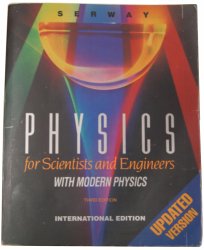
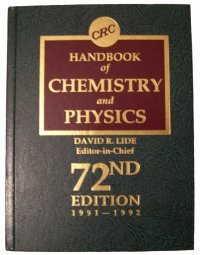 Main source for observational facts and standard model description is internet
and books as: Serway:
Physics for Scientists and Engineers with Modern Physics, Third Internal Edition
1992(=PSE)
Main source for observational facts and standard model description is internet
and books as: Serway:
Physics for Scientists and Engineers with Modern Physics, Third Internal Edition
1992(=PSE)
|
|
|
So why stick to a theory that is so diffuse that neither lecturer nor students really understands it?